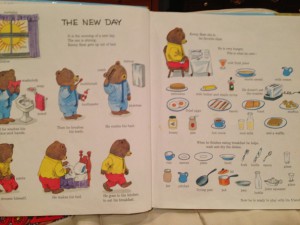The secret
The secret to getting kids to eat vegetables is really quite simple. Give them the choice. Before you click away saying, “My kid would choose not to eat them,” hear me out. I didn’t say give them the choice whether or not to eat vegetables. Give them the choice of which vegetables and fruits.
There is real scientific evidence to back this up, but let me begin anecdotally. The photo above is from our Pittsburgh-area elementary school cafeteria. How does our school get kids to eat vegetables and fruits? They offer a choice.
And when my boys buy lunch, which is about once a week, I tell them they need to choose a fruit and a vegetable, but it’s up to them what to choose. I offer them a choice.
My second son, who is a bit picky, usually sticks with applesauce and carrots.
My oldest son almost always chooses grapes and the crunchy vegetable mix of cucumbers, celery and carrots. Choices within choices.
The science
Now for the scientific evidence. This study in the American Journal of Clinical Nutrition concludes that offering kids a variety of vegetables and fruit and letting them choose which ones to eat led to them eating more fruits and vegetables!
The researchers observed that “children chose some pieces in 94% of snacks with variety and in 70% of snacks without variety” and “Providing a variety of vegetables and fruit as a snack led to increased consumption of both food types in a childcare facility. Serving a variety of vegetables or fruit as a snack could help preschool children meet recommended intakes.”
Think about your own eating habits. I am sure you prefer to have more than a little choice in the matter. We all love some control over what we eat. So if you are looking for ways to get kids to eat vegetables and fruits, offer a choice.
Have you given your kids choice in their foods? Has it helped?
















